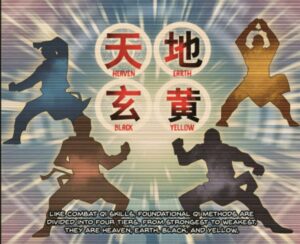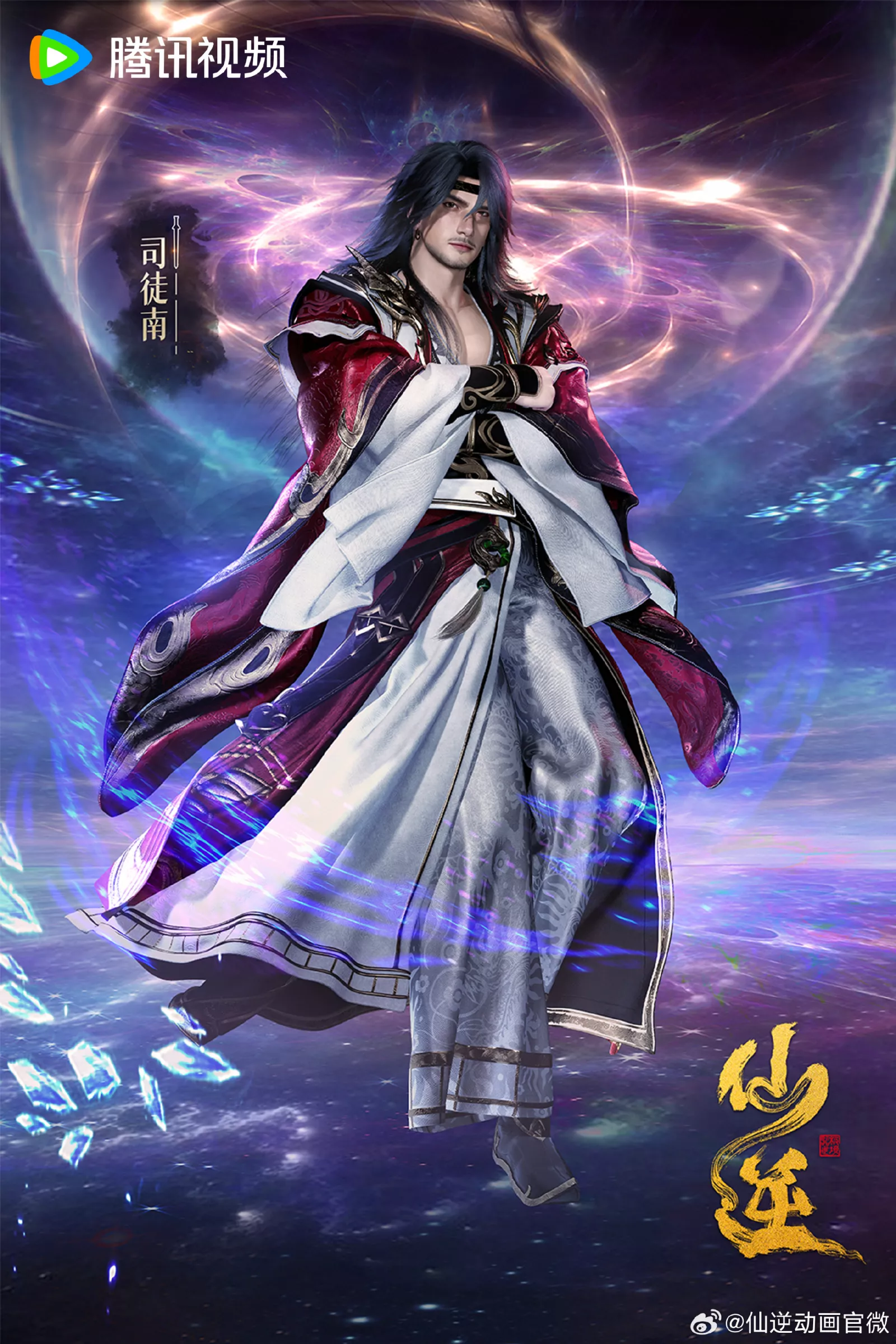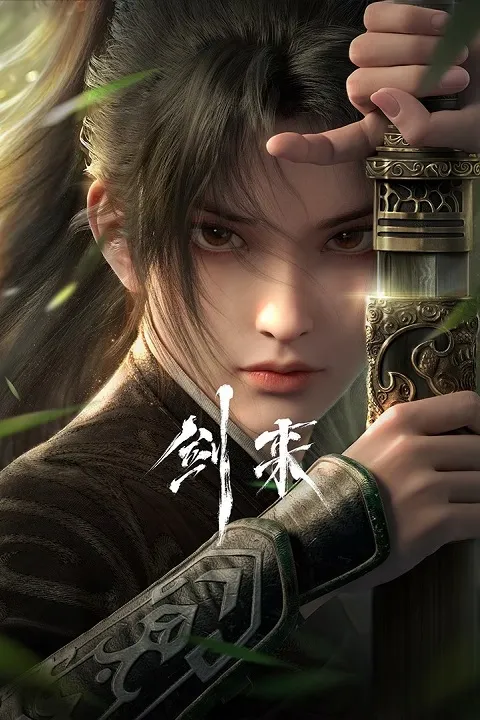BTTH Cultivation Techniques Guide

BTTH Cultivation Techniques
Welcome, aspiring cultivators, to the definitive guide on Battle Through The Heavens BTTH cultivation techniques. Whether you’re a newcomer to the world of Xiao Yan or a seasoned fan looking to deepen your understanding, this guide will illuminate the intricate path of cultivation in the BTTH universe.
Battle Through The Heavens, known as Doupo Cangqiong in Chinese, presents a rich and complex system of martial cultivation that has captivated readers and viewers worldwide. At its core, BTTH’s cultivation revolves around the concept of Dou Qi, a form of energy that practitioners harness to perform extraordinary feats and ascend to greater heights of power.
In this comprehensive guide, we’ll explore:
1. The fundamental principles of Dou Qi
2. The role of elemental attributes in cultivation
3. The progression of cultivation ranks
4. Famous techniques showcased in the series
5. Essential cultivation resources and items
6. The mental aspects of cultivation
7. Advanced methods of combining techniques
8. Common challenges in cultivation and how to overcome them
9. Real-world inspirations behind BTTH Cultivation Techniques
By the end of this guide, you’ll have a thorough understanding of the cultivation system that drives the narrative of Battle Through The Heavens. So, let’s begin our journey into the world of Dou Qi and uncover the secrets that propelled Xiao Yan from a fallen genius to one of the most formidable cultivators in his world.
II. Basic Principles of Dou Qi
At the heart of cultivation in Battle Through The Heavens lies Dou Qi, the fundamental energy that powers all techniques and abilities. Understanding Dou Qi is crucial for any aspiring cultivator in the BTTH universe.
What is Dou Qi?
Dou Qi is a form of internal energy that exists within all living beings. It’s similar to concepts like qi or chi in other cultivation novels and martial arts traditions. In BTTH, cultivators learn to harness and manipulate this energy to enhance their physical abilities, perform incredible techniques, and even alter the world around them.
Key Characteristics of Dou Qi:
1. Internal Energy: Dou Qi resides within the body and can be cultivated through various methods.
2. Elemental Affinity: Each person’s Dou Qi has an elemental attribute, which we’ll explore in more depth later.
3. Quantifiable: A person’s Dou Qi can be measured, usually expressed in star rankings within each cultivation tier.
4. Transformative: As cultivators progress, their Dou Qi becomes more refined and powerful.
Cultivation of Dou Qi:
Cultivators in BTTH primarily enhance their Dou Qi through the following methods:
1. Meditation: Focusing the mind to circulate and refine Dou Qi within the body.
2. Physical Training: Rigorous exercises that strengthen the body and increase Dou Qi capacity.
3. Combat: Real-world application of techniques can lead to breakthroughs in cultivation.
4. Alchemical Aids: Consuming specially crafted pills or elixirs can boost Dou Qi cultivation.
5. Natural Energy Absorption: Some advanced techniques allow direct absorption of elemental energy from the environment.
The Dou Qi Circulation Cycle:
Understanding how Dou Qi flows through the body is crucial for cultivators. The basic cycle involves:
1. Gathering: Drawing Dou Qi from the environment or from within the body.
2. Refining: Purifying the gathered Dou Qi to make it more potent.
3. Circulating: Moving the refined Dou Qi through specific pathways in the body.
4. Storing: Accumulating refined Dou Qi in the dantian, a center of energy in the lower abdomen.
5. Applying: Using stored Dou Qi to power techniques or enhance physical abilities.
Mastering this cycle is the foundation of all cultivation in BTTH. As cultivators progress, they learn to perform this cycle more efficiently and with greater quantities of Dou Qi.
Dou Qi Sensitivity:
An important aspect of cultivation is developing sensitivity to Dou Qi. This allows cultivators to:
– Detect the strength of others
– Identify elemental affinities
– Sense hidden dangers or opportunities
– Manipulate Dou Qi with greater precision
In the next section, we’ll delve into the elemental attributes of Dou Qi, a key factor that influences a cultivator’s path and potential in the world of Battle Through The Heavens.
III. Elemental Attributes in BTTH
In the Battle Through The Heavens universe, Dou Qi is not a uniform energy. Instead, it manifests in various elemental attributes, each with its own characteristics and advantages. Understanding these attributes is crucial for any cultivator seeking to maximize their potential.
The Five Basic Elements:
1. Fire (火): Associated with passion, aggression, and destruction.
2. Water (水): Represents fluidity, adaptability, and healing.
3. Wood (木): Symbolizes growth, vitality, and life force.
4. Metal (金): Embodies sharpness, resilience, and precision.
5. Earth (土): Signifies stability, defense, and endurance.
These five elements form the foundation of elemental Dou Qi in BTTH. Most cultivators have an affinity for one of these elements, which influences their cultivation path and fighting style.
Elemental Affinities:
A cultivator’s elemental affinity is typically determined at birth or during their early stages of cultivation. This affinity affects:
– The type of techniques they can easily master
– Their strengths and weaknesses in battle
– The nature of their Dou Qi’s manifestation
For example, Xiao Yan’s fire affinity allows him to excel in flame-based techniques and gives his attacks an explosive, aggressive quality.
Advanced Elemental Concepts:
1. Elemental Fusion: Some advanced cultivators can combine two or more elements to create more powerful techniques.
2. Elemental Opposites: Understanding the relationships between elements (e.g., water counters fire) is crucial for both offense and defense.
3. Rare Elements: Beyond the five basic elements, there are rarer, more powerful elemental attributes like lightning or wind.
The Heavenly Flame:
A unique concept in BTTH is the Heavenly Flame, an extraordinarily powerful form of fire-attribute energy. There are multiple types of Heavenly Flames, each with its own characteristics and abilities. Mastering a Heavenly Flame is a significant milestone in a fire-attribute cultivator’s journey.
Elemental Cultivation Methods:
Each elemental attribute has specific cultivation methods that maximize its potential:
– Fire: Often involves tempering the body in extreme heat or absorbing flame energy.
– Water: May include meditation near bodies of water or practicing fluid, circular movements.
– Wood: Might focus on harmonizing with nature or cultivating life force.
– Metal: Could involve refining the body’s durability or practicing precise, cutting techniques.
– Earth: May emphasize rooting exercises or absorbing energy from the ground.
Environmental Factors:
The surrounding environment can significantly impact elemental cultivation:
– Fire cultivators might seek out volcanoes or desert regions.
– Water practitioners could prefer coastal areas or places with pure springs.
– Wood-attribute cultivators might thrive in lush forests.
– Metal-aligned individuals could benefit from mineral-rich mountains.
– Earth cultivators might seek out areas with strong terrestrial energy.
Understanding and leveraging these elemental attributes is key to advancing in the world of BTTH Cultivation Techniques. In the next section, we’ll explore the progression of cultivation ranks, which marks a cultivator’s journey from novice to master.
IV. Progression of Cultivation Ranks
In Battle Through The Heavens, a cultivator’s journey is marked by distinct ranks or levels. Each rank represents a significant increase in power and brings the cultivator closer to the peak of martial prowess. Understanding this progression is crucial for aspiring cultivators.
The Main Cultivation Ranks:
1. Dou Zhi (斗之) – Fighter
2. Dou Zhe (斗者) – Warrior
3. Dou Shi (斗师) – Master
4. Dou Ling (斗灵) – Spirit
5. Dou Wang (斗王) – King
6. Dou Huang (斗皇) – Emperor
7. Dou Zong (斗宗) – Ancestor
8. Dou Zun (斗尊) – Venerate
9. Dou Sheng (斗圣) – Saint
10. Dou Di (斗帝) – God
Each of these main ranks is further divided into sub-ranks, typically:
– Early Stage (初期)
– Middle Stage (中期)
– Late Stage (后期)
– Peak Stage (巅峰)
Advancement Through Ranks:
Progressing through these ranks requires:
1. Accumulation of Dou Qi: Increasing the quantity and quality of one’s internal energy.
2. Insight: Gaining a deeper understanding of Dou Qi and cultivation techniques.
3. Breakthroughs: Overcoming bottlenecks to reach new levels of power.
4. Physical Transformation: The body evolves to contain and control greater amounts of Dou Qi.
Key Milestones:
– Dou Zhe to Dou Shi: Marks the transition from an ordinary fighter to a true cultivator.
– Dou Wang: Often considered the threshold for being recognized as a powerful figure in the cultivation world.
– Dou Huang: At this level, cultivators can start to influence the natural world with their Dou Qi.
– Dou Zun and beyond: These legendary ranks are achieved by only a handful of cultivators in each generation.
Challenges of Advancement:
1. Bottlenecks: Periods where progress seems impossible, requiring special insights or resources to overcome.
2. Resource Requirements: Higher ranks often need rarer and more potent resources to advance.
3. Comprehension: Each rank requires a deeper understanding of Dou Qi and the cultivation arts.
4. Risk: The process of breaking through to a new rank can be dangerous, especially at higher levels.
Cultivation Speed:
The rate at which a cultivator progresses through these ranks can vary greatly based on:
– Innate talent
– Quality of cultivation techniques
– Available resources
– Dedication and effort
– Opportunities for growth (e.g., life-or-death battles, rare treasures)
Xiao Yan’s journey in BTTH is notable for his rapid progression through these ranks, often defying common expectations.
Impact of Rank on Society:
In the BTTH world, cultivation rank plays a significant role in determining one’s status and influence:
– Lower ranks (Dou Zhi to Dou Shi) are common in martial schools and smaller clans.
– Mid-ranks (Dou Ling to Dou Wang) often hold leadership positions in larger organizations.
– High ranks (Dou Huang and above) are respected figures who can shape the fate of entire regions.
Understanding this progression gives context to the challenges and achievements of characters in BTTH. In the next section, we’ll explore some of the famous techniques that cultivators use to climb these ranks and demonstrate their power.
V. Famous Techniques in the Series
Battle Through The Heavens is renowned for its array of powerful and imaginative techniques. These skills showcase the pinnacle of cultivation and often play crucial roles in the story’s major confrontations. Let’s explore some of the most famous techniques in the series.
1. Flame Mantra (焚决)
– Type: Fire-attribute cultivation technique
– User: Xiao Yan
– Description: A high-level fire cultivation method that allows the user to control flames with exceptional precision and power. It forms the basis of many of Xiao Yan’s techniques.
2. Octane Blast (八极崩)
– Type: Close-combat technique
– User: Xiao Yan
– Description: A powerful striking technique that concentrates Dou Qi into a single point, capable of shattering defenses and inflicting severe internal injuries.
3. Three Thousand Lightning Movement (三千雷动)
– Type: Movement technique
– User: Various characters
– Description: An advanced movement skill that dramatically increases the user’s speed, making them appear to teleport short distances.
4. Buddha’s Fury Flame Lotus (佛怒火莲)
– Type: Fire-attribute attack
– User: Xiao Yan
– Description: One of Xiao Yan’s ultimate techniques, creating a massive lotus flower of intense flame capable of overwhelming most opponents.
5. Heavenly Flame Tablet (天火尺)
– Type: Fire-attribute artifact technique
– User: Yao Lao
– Description: A powerful technique that manipulates Heavenly Flames, often used in conjunction with alchemy.
6. Green Lotus Core Flame (青莲地心火)
– Type: Heavenly Flame
– Description: One of the Heavenly Flames Xiao Yan acquires, known for its ability to refine and purify other flames.
7. Dragon-Phoenix Vermillion Bird Form (龙凤汇萃)
– Type: Martial art form
– User: Xun Er
– Description: A high-level technique that combines the power of dragon and phoenix, symbolizing the unity of yin and yang.
8. Angry Buddha Lotus Flame (怒佛莲火)
– Type: Combined fire technique
– User: Xiao Yan
– Description: An advanced version of the Buddha’s Fury Flame Lotus, incorporating multiple types of flame for devastating effect.
9. Sky Fire Three Mysterious Change (三玄变)
– Type: Transformation technique
– User: Xiao Yan
– Description: A powerful technique that allows Xiao Yan to undergo three levels of transformation, each significantly boosting his combat capabilities.
10. Burning Heaven Halberd (焚天矛)
– Type: Weapon technique
– User: Xiao Yan
– Description: A technique that creates a powerful flame halberd, capable of both melee and ranged attacks.
Key Aspects of BTTH Techniques:
1. Elemental Fusion: Many advanced techniques combine multiple elements or types of Dou Qi.
2. Risk and Reward: More powerful techniques often come with greater risks to the user.
3. Adaptability: Top-tier cultivators can modify and combine techniques on the fly.
4. Personal Style: Techniques often reflect the personality and cultivation path of the user.
Learning and Mastering Techniques:
– Acquiring technique knowledge (through scrolls, teachers, or insights)
– Practicing basic forms repeatedly
– Understanding the underlying principles
– Adapting techniques to one’s own cultivation style
– Experiencing real combat to refine and perfect techniques
Impact of Techniques on Combat:
In BTTH, mastery of powerful techniques can allow cultivators to punch above their weight class, defeating opponents of higher ranks. However, technique alone is not enough; it must be combined with strategic thinking, battle experience, and a deep understanding of Dou Qi manipulation.
In the next section, we’ll explore the various cultivation resources and items that aid cultivators in mastering these techniques and advancing their cultivation.
VI. Cultivation Resources and Items
In the world of Battle Through The Heavens, a cultivator’s progress is not solely determined by their effort and talent. Various resources and items play crucial roles in enhancing cultivation speed, breaking through bottlenecks, and providing strategic advantages in battle. Let’s explore some of the key cultivation resources and items in BTTH.
1. Medicinal Pills
– Function: Enhance cultivation speed, restore energy, heal injuries
– Examples:
a) Body Tempering Pill: Strengthens physical body
b) Spirit Recovery Pill: Quickly restores Dou Qi
c) Breakthrough Pill: Aids in breaking cultivation bottlenecks
2. Elixirs
– Function: More potent than regular pills, often with unique effects
– Examples:
a) Dragon Phoenix Elixir: Dramatically boosts cultivation for a short period
b) Nine Yang Elixir: Enhances fire-attribute cultivation
3. Cultivation Manuals
– Function: Provide instruction on cultivation techniques and methods
– Examples:
a) Flame Mantra: Xiao Yan’s primary cultivation method
b) Di Class Cultivation Technique: Top-tier manuals for advanced cultivators
4. Weapons
– Function: Channel and amplify Dou Qi, provide unique abilities
– Examples:
a) Heavy Xuan Ruler: Xiao Yan’s signature weapon
b) Heaven Swallowing Python Sword: A powerful artifact weapon
5. Dou Qi Crystals
– Function: Contain pure Dou Qi that can be absorbed directly
– Usage: Often used to quickly replenish energy or aid in breakthroughs
6. Heavenly Flames
– Function: Extremely powerful fire-attribute energy sources
– Examples:
a) Fallen Heart Flame: One of the first Heavenly Flames Xiao Yan encounters
b) Bone Chilling Flame: A unique flame with ice-like properties
– Usage: Can be used to dramatically increase a fire cultivator’s power, refine pills, or as a powerful weapon
7. Spirit Beasts
– Function: Powerful creatures that can be tamed and bonded with cultivators
– Examples:
a) Purple Cloud Wings: Enhances flight abilities
b) Heavenly Flame Spirit: A sentient Heavenly Flame that can aid in cultivation
– Benefits: Provide unique abilities, can be summoned in battle, aid in cultivation
8. Spatial Rings
– Function: Storage devices that create a pocket dimension
– Usage: Store large quantities of items, including cultivation resources and weapons
– Importance: Allow cultivators to carry vast resources with them at all times
9. Cultivation Environments
– Function: Special locations that enhance cultivation speed or provide unique benefits
– Examples:
a) Gravity Training Room: Increases gravity to enhance physical training
b) Elemental Springs: Natural sources of concentrated elemental energy
– Usage: Cultivators often seek out these locations for breakthroughs or specialized training
10. Bloodline Talents
– Function: Inherited abilities that provide unique advantages in cultivation
– Examples:
a) Phoenix Bloodline: Enhances fire-attribute cultivation and provides regenerative abilities
b) Dragon Bloodline: Grants immense physical strength and elemental resistance
– Importance: Can significantly influence a cultivator’s potential and cultivation path
11. Ancient Artifacts
– Function: Powerful items left behind by ancient experts, often with mysterious abilities
– Examples:
a) Feng Tian Weave: An artifact capable of sealing Heavenly Flames
b) Ancient Stone Tablet: Contains knowledge of lost cultivation techniques
– Usage: Can provide unique insights, abilities, or serve as powerful weapons
12. Alchemical Equipment
– Function: Used in the creation of pills and elixirs
– Examples:
a) Medicine Cauldrons: Used to refine medicinal ingredients
b) Pill Furnaces: Advanced equipment for creating high-level pills
– Importance: Essential for alchemists and crucial for creating cultivation resources
Key Points about Cultivation Resources and Items:
1. Rarity and Power Correlation: Generally, the rarer the item or resource, the more powerful its effects on cultivation.
2. Risk and Reward: Many powerful resources come with significant risks if used improperly.
3. Synergy: Skilled cultivators often combine different resources and items to maximize their benefits.
4. Plot Drivers: In BTTH, the search for rare resources often drives major story arcs and conflicts.
5. Personal Compatibility: Not all resources are suitable for every cultivator; matching with one’s elemental affinity and cultivation method is crucial.
6. Economy: These resources form the backbone of the cultivation world’s economy, with many conflicts arising over their control and distribution.
7. Knowledge is Key: Understanding how to properly use these resources is often as important as possessing them.
The effective use of these cultivation resources and items can make the difference between success and failure in the competitive world of BTTH. In the next section, we’ll explore the mental aspects of cultivation, which are crucial for properly utilizing these resources and advancing along the path of martial arts.
VII. Mental Aspects of Cultivation
While physical training and resource acquisition are crucial, the mental aspects of cultivation in Battle Through The Heavens are equally important. A cultivator’s mindset, willpower, and mental techniques play vital roles in their advancement and combat effectiveness.
1. Mental Fortitude
– Importance: Crucial for withstanding the pressures of cultivation and combat
– Development: Through meditation, life-or-death battles, and overcoming personal challenges
– Benefits: Enables cultivators to maintain composure in critical situations and resist mental attacks
2. Cultivation Insight
– Description: The ability to understand and internalize profound cultivation concepts
– Acquisition: Through study, experience, and moments of enlightenment
– Impact: Allows for faster cultivation progress and the creation of unique techniques
3. Battle Spirit
– Definition: A cultivator’s fighting will and combat instincts
– Enhancement: Developed through real combat experience and intense training
– Effects: Improves reaction time, battle awareness, and the ability to seize opportunities in combat
4. Dao Heart
– Concept: A cultivator’s unwavering determination and alignment with their chosen path
– Importance: Protects against mental demons and cultivation deviation
– Cultivation: Strengthened by overcoming doubts and staying true to one’s beliefs
5. Mental Realms
– Description: States of mind that enhance a cultivator’s performance
– Examples:
a) Realm of Calm: Enhances decision-making and Dou Qi control
b) Realm of Battle: Heightens combat instincts and reaction speed
– Achievement: Reached through intense focus and spiritual cultivation
6. Spiritual Sense
– Definition: The ability to perceive and interact with the world through Dou Qi
– Development: Improves with cultivation rank and specific training techniques
– Applications: Used for detection, communication, and controlling certain techniques
7. Intent Manifestation
– Concept: The ability to imbue attacks with specific intents or concepts
– Examples: Sword Intent, Flame Intent, Destruction Intent
– Impact: Greatly enhances the power and effectiveness of techniques
8. Mental Barriers and Breakthroughs
– Description: Mental blocks that hinder cultivation progress
– Overcoming: Often requires personal growth, new insights, or life-changing experiences
– Significance: Breaking through mental barriers often leads to significant power boosts
9. Meditation Techniques
– Purpose: To cultivate Dou Qi, gain insights, and strengthen the mind
– Examples:
a) Qi Circulation Meditation: Enhances Dou Qi refinement and circulation
b) Void Meditation: Improves mental clarity and spiritual sense
– Importance: Regular meditation is crucial for steady cultivation progress
10. Willpower Cultivation
– Definition: The strengthening of one’s determination and mental resilience
– Methods: Enduring harsh training, setting and achieving goals, facing fears
– Benefits: Enhances ability to push beyond limits and resist mental interference
Key Aspects of Mental Cultivation:
1. Balance: Maintaining a balance between mental and physical cultivation is crucial for harmonious progress.
2. Individuality: Each cultivator’s mental journey is unique, influenced by their experiences and personality.
3. Constant Challenge: Mental cultivation requires continuous self-reflection and pushing beyond comfort zones.
4. Synergy with Physical Cultivation: Strong mental abilities can compensate for physical shortcomings and vice versa.
5. Adaptability: A well-cultivated mind allows for quicker adaptation to new techniques and situations.
6. Resistance to External Influences: Mental cultivation provides protection against mind-controlling techniques and illusions.
7. Foundation for Advanced Techniques: Many high-level techniques in BTTH require a strong mental foundation to execute properly.
The mental aspects of cultivation are often what separate truly exceptional cultivators from the rest. In BTTH, characters like Xiao Yan frequently overcome seemingly insurmountable odds through sheer willpower and mental strength, highlighting the importance of these aspects in the cultivation world.
In the next section, we’ll explore advanced methods of combining techniques, which require both mental acuity and physical prowess to execute effectively.


















